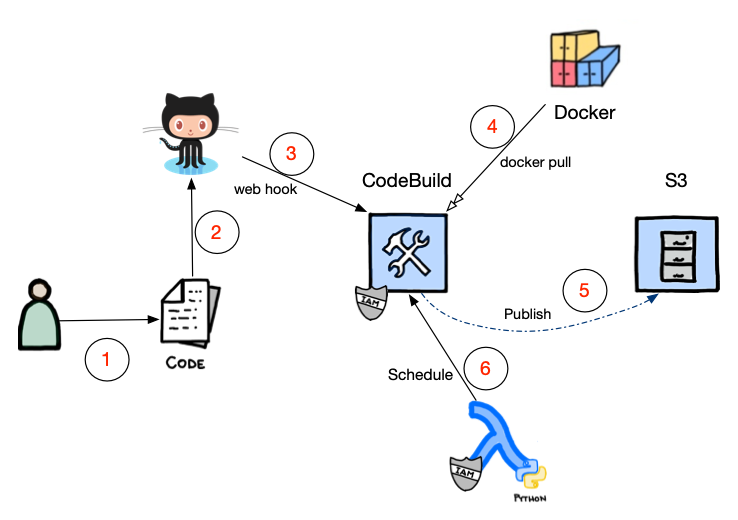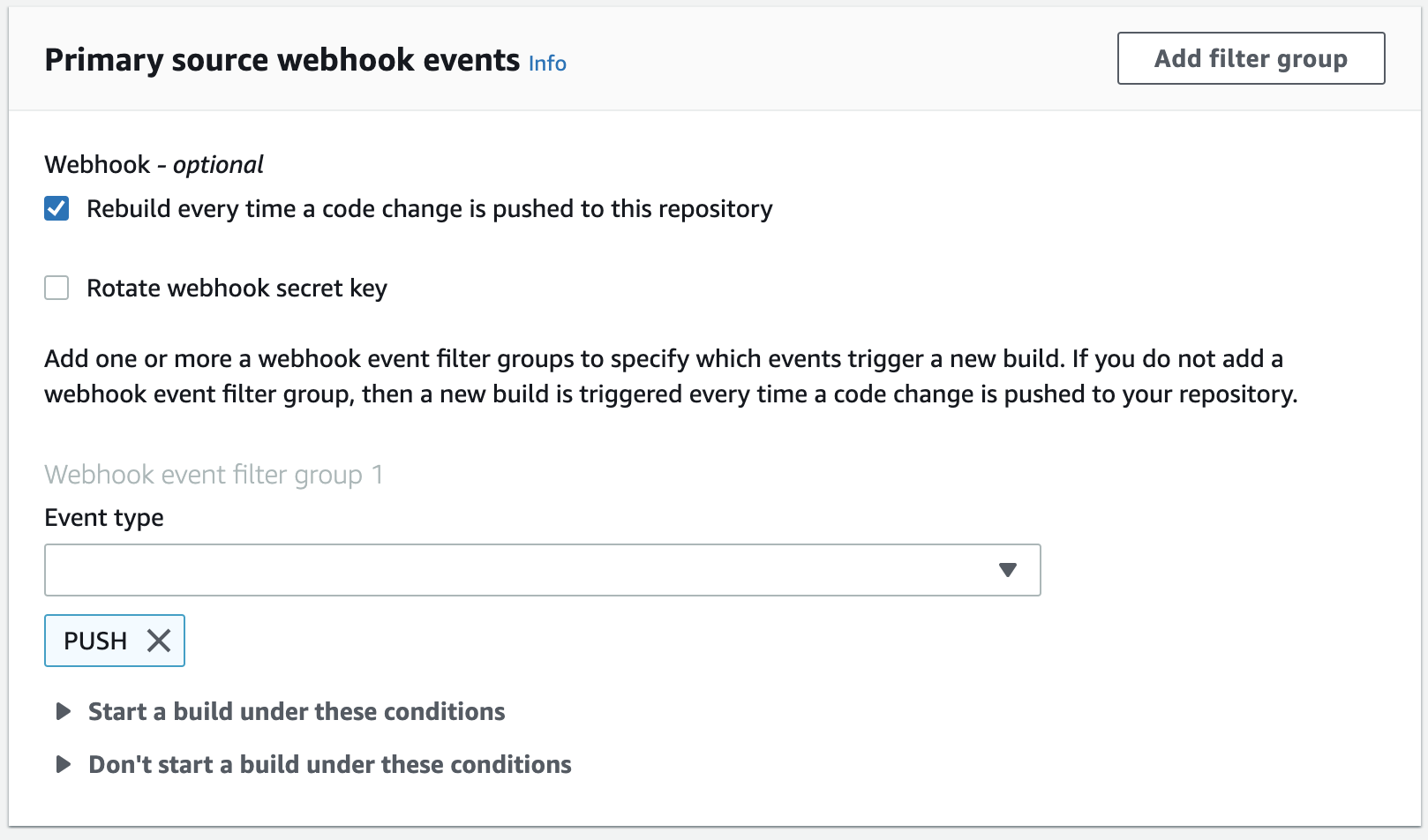Blog Publishing Process
There are a number of ways to publish content for a blog, and many people who have moved to static HTML platforms like hugo use a similar flow.
In my Blog Migration Series, I went through how the migration process. This post will be about how I actually publish my content, and the flow that I have found that works for me.
My tools
The tools that I use are:
- vscode is my code editor of choice. I use a number of extensions (a.k.a plugins to help me during my work.)
- A private github repository to store all my content (I will explain why this github repo is private shortly)
- AWS S3 for the “webhosting” of my content
- AWS CodeBuild for the build engine to generate the content
- AWS Lambda for a scheduled task (more on this later)
- AWS SNS for notifications by email
The workflow
A picture is worth a thousand words.

-
The first stage of course is to write the actual content.
-
When I am happy with the post, and ready to publish it - I commit the code to git.
As I mentioned before the git repository where the blog posts - are stored are on github and I also mentioned that the repository is private - that means I am the only one who can actually see the code.
The reason for this decision, is because there are some blog posts I have published in the past, and will probably do so in the future - that are covered under NDA - and that NDA has an expiration date. If I were to commit the text to a public repository - then that information would be out there in the public domain. I would be breaking the confidence of the party that has entrusted me with this private information (something of course that I would never do). Therefore - I chose to keep my markdown source content private and closed to the world. -
I have a webhook enabled on the repository that will notify AWS CodeBuild, when new code is pushed.

This is what it looks like from the CodeBuild side.

-
The configuration of the buildspec works with a container - and in my case I am using a customized container that I built, which is a minimal image (based on alpine) with a specific version of hugo (currently v0.62.0). There is an option to use a generic container image, but I opted for own docker image, because it was a waste of build time to pull the software release for each and every build and run through the same commands. It also reduced my build times by approximately 30 seconds - so it was a win-win all around.
-
CodeBuild works with a buildspec file which contains all the necessary steps to build my site.
The source code from my git repository is made available to the container - for every commit.Here is my current
buildspec.yml(confidential information has been removed)version: 0.2 phases: build: commands: - hugo - echo "S3 Upload Beginning" - aws s3 sync public/ s3://<_MY_S3_BUCKET_>/ --delete --size-only - echo "S3 Upload Complete" post_build: commands: - echo "Build complete" - | curl "https://api.cloudflare.com/client/v4/zones/12345678b4e8c1e87a06b58e41d0f5/purge_cache" \ -X POST -H "X-Auth-Email: $cloudflare_email" \ -H "X-Auth-Key: $cloudflare_token" \ -H "Content-Type: application/json" --data '{"files":["https://blog.technodrone.cloud/posts/index.xml","https://blog.technodrone.cloud"]}' - aws sns publish --topic-arn arn:aws:sns:us-east-2:123456789460:blog_publish --subject 'AWS CodeBuild Complete' --message 'Your build using AWS CodeBuild has been completed. Check the CodeBuild console to see the details.'Let me explain a bit about what the steps are in the
buildspec-
I have used two stages,
buildandpost_build.build
- the
hugocommand generates content based on the markdown and produces a directorypublicinside the container, with all the generated html files. - An
echostatement for logging purposes. - Here I sync all the static content to my S3 bucket where the site resides.
You will see that there are two flags on the command line--delete- I used this flag, so that if a post is removed from the source code - that will also remove it from the website, and the second--size-only- to ensure that only the files that have changed in size during this build, are sync’ed to the S3 bucket. By default all generated files are modified in timestamp - and that would cause for almost a full sync of the site (even though the files actually did not change at all). There is a thread here on the support site - describing the problem. - Another
echostatement for logging purposes.
post_build
- An
echostatement for logging purposes. - Here is a step that invalidates the cache for the main page of my site and the rss feed - so that changes can be picked up immediately.
I am using cloudflare as my CDN - so it is a simple curl request. Of course the credentials are passed in a environment variables - so that they are not exposed in the clear. - The last one is a notification that I send to my email account.
- the
-
-
The last part is a Lambda function. As I mentioned before there are posts that I want to write ahead of time, and have them published only at a certain date and time. The process described above only generates content - based on a git push. If the
dateof the post is sometime in the future - the static content would of course never be created. This could lead to a situation that I have already pushed the code to git, but the blog post would never be published, until I push another change to the repo. This is why I decided on using a Lambda function that would run every 4 hours, and all this function would do - was to trigger CodeBuild again - with the last commit that was registered.
This was an elegant (and cost-effective) solution to my problem. The timestamp on the post would no longer be in the future, and hugo would generate the content and of course publish the post.This is a simple Lambda function that I wrote
import os import boto3 PROJECT_NAME = os.environ['PROJECT_NAME'] codebuildclient = boto3.client('codebuild') def lambda_handler(event, context): response = codebuildclient.start_build(projectName=PROJECT_NAME)
“And that is how the sausage is made”
I would be very interested to hear your thoughts or comments so please feel free to ping me on Twitter.
